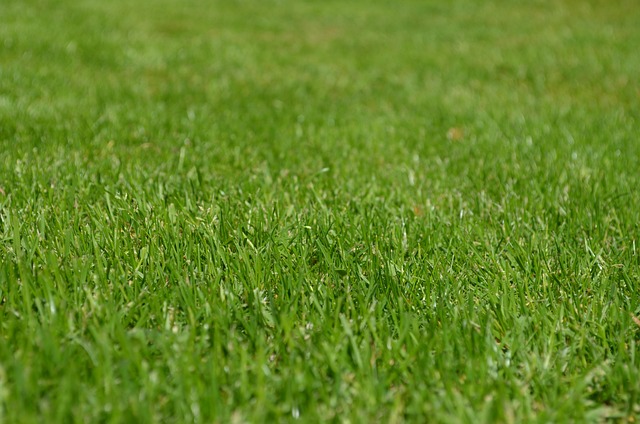Lawn care and landscaping professionals emphasize two key techniques: mulching and edging. Mulch, whether organic (enriching soil) or inorganic (longer-lasting weed suppression), creates a protective barrier that conserves moisture, prevents weeds, regulates temperature, and improves soil structure. Edging, the act of meticulously trimming lawn edges to define boundaries, enhances aesthetics, reduces maintenance, promotes better water distribution, and is a game-changer in lawn care. Master these techniques – choosing appropriate mulch types, maintaining application depth, avoiding trunk rot, and using correct edging tools – for a lush, well-maintained lawn that highlights landscaping efforts.
Transform your lawn into a picture-perfect oasis with the power of mulching and edging. This essential practice in lawn care and landscaping offers numerous benefits, from enhancing soil health to improving curb appeal. Mulch acts as a protective blanket, retaining moisture, suppressing weeds, and regulating temperature. Edging, on the other hand, defines your lawn’s boundaries, creating a crisp, professional look. In this guide, we’ll explore various mulching types, reveal the art of precise edging, and share best practices for achieving lawn perfection.
- Understanding Mulching: Benefits and Types for Lawn Health
- The Art of Edging: Enhancing Lawn Aesthetics and Functionality
- Best Practices for Effective Mulching and Edging Techniques
Understanding Mulching: Benefits and Types for Lawn Health

Mulching is an essential practice in lawn care and landscaping, offering numerous benefits for your lawn’s health and overall aesthetics. By adding organic material, such as wood chips or straw, to the top layer of soil, mulching creates a protective barrier that retains moisture, suppresses weeds, and regulates soil temperature. This natural process enhances the soil structure, improving water and nutrient absorption, leading to a lush and vibrant lawn.
There are various types of mulch available, each with unique properties. Organic mulches, derived from plant matter, are popular choices due to their ability to decompose, enriching the soil over time. In contrast, inorganic mulches like rock or rubber chips provide longer-lasting solutions, preventing weed growth without contributing to the soil’s fertility. The right type of mulch can transform your lawn, making it easier to maintain and ensuring a healthier, more visually appealing outdoor space.
The Art of Edging: Enhancing Lawn Aesthetics and Functionality

The art of edging is a crucial aspect of lawn care and landscaping, often overlooked yet significantly impactful on a garden’s overall look and health. It involves meticulously trimming and defining the edges of your lawn, creating clean lines between grass and pathways, gardens, or other landscaping features. This simple yet meticulous practice offers more than just aesthetic benefits; it also serves as a functional barrier, preventing grass from encroaching onto sidewalks and driveways, thus saving you time and effort in maintenance.
By edging, you can create a polished and refined appearance for your outdoor space. It accentuates the structure of your lawn, highlighting its boundaries and creating a sense of order. Moreover, proper edging allows for better water distribution, as it prevents grass from drying out along the edges, leading to healthier and more vibrant lawns. This technique is a game-changer in lawn care, ensuring that both the visual appeal and practical functionality of your landscaping are enhanced.
Best Practices for Effective Mulching and Edging Techniques

Effective lawn care and landscaping hinge on mastering mulching and edging techniques. For optimal results, start by selecting the right mulch type for your lawn’s specific needs—whether it’s organic materials like wood chips or straw, or artificial options. Even application is key; spread mulch evenly to a depth of 2-4 inches, avoiding pile-ups against tree trunks to prevent rot.
Edging plays a crucial role in defining your lawn’s borders and maintaining a polished look. Choose the right tools like string trimmers, edgers, or hand tools depending on the size and accessibility of the area. Keep edges sharp for clean cuts and regularly trim back weeds that can quickly encroach. Consistent practice of these best practices will result in a lush, well-maintained lawn that showcases your landscaping efforts.
Mulching and edging are essential components of lawn care and landscaping, offering both aesthetic and practical benefits. By understanding the different types of mulches and mastering the art of clean edges, you can transform your lawn into a healthy, visually appealing space. Incorporating these techniques into your routine maintenance will ensure a lush, well-defined garden that becomes the envy of your neighborhood.
